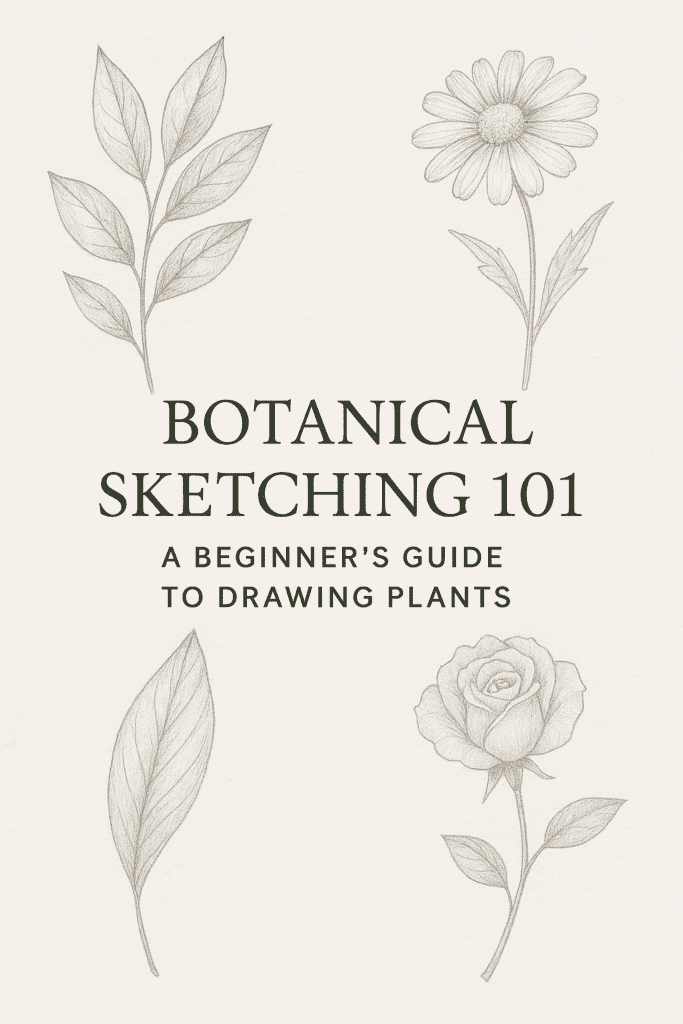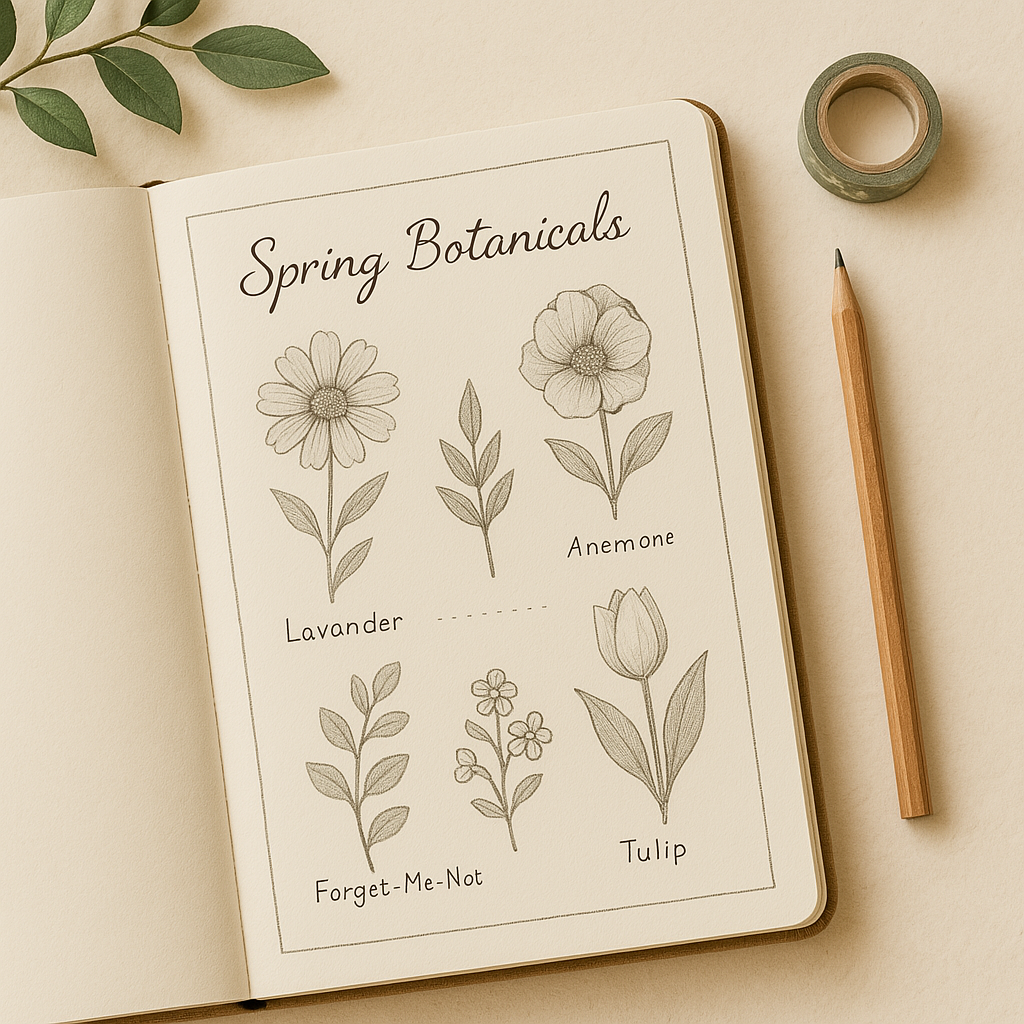There’s something undeniably calming about capturing nature’s delicate beauty in your sketchbook. Whether you’re sipping tea at your desk or sketching in a sunlit garden, botanical drawing is a peaceful, rewarding way to connect with the world around you.
If you’ve ever wanted to fill your sketchbook with elegant florals, leafy stems, or vintage-style plant illustrations, this beginner’s guide is the perfect place to start.

✏️ What You’ll Need to Begin
Before you sketch your first petal, here are a few simple supplies to gather:
- Sketchbook with smooth pages (Mixed media or Bristol is great)
- Pencils – try HB for outlines, and 2B or 4B for shading
- Fine liner pens for details (Micron or Faber-Castell are great options)
- Eraser – a kneaded eraser is especially helpful for gentle corrections
- Optional: Watercolor set or colored pencils for adding color
🌸Tip: Want to upgrade your botanical sketching kit? Shop my favorite sketchbook!

🌱 Step 1: Choose Your Plant Subject
Start with simple plants that have clear shapes. Here are great beginner-friendly options:
- A single leaf (like a eucalyptus or monstera)
- A simple flower (like a daisy, tulip, or rosebud)
- A succulent (great for practicing curves and shading)
If you don’t have access to fresh plants, use reference photos or royalty-free botanical illustrations online.

🌿 Step 2: Break Down the Shapes
Think in basic forms before adding details:
- Circle for a flower head
- Ovals or teardrops for leaves
- Curved lines for stems
Lightly sketch these forms first. Keep your lines soft and loose—it’s just the blueprint.

🌸 Step 3: Outline the Details
Now refine your sketch:
- Add the curves and edges of the petals or leaves
- Sketch the veins on the leaf
- Refine the flower center with texture and shape
Pro Tip: Use a fine liner pen to outline once you’re happy with the pencil sketch. Let the ink dry before erasing the pencil underneath.

☀️ Step 4: Add Shading or Color
Shading brings depth and realism:
- Lightly shade areas that would be in shadow
- Use hatching or stippling with a pen for texture
- Add color with watercolor washes or colored pencils if you like
🌿 Try This: Use a muted sage green and blush pink palette for a vintage botanical vibe.



📔 Bonus Idea: Create a Botanical Sketchbook Spread
Once you’ve practiced a few individual sketches, try designing a themed page layout:
- Title your page “Spring Botanicals” or “Wildflower Study”
- Add small notes (like flower names or fun facts)
- Create a border or use washi tape to frame your drawings
This is a beautiful way to turn your sketchbook into an art journal!

🛒 Wendy’s Sketchbook Picks
Here are my favorite beginner-friendly products for botanical sketching:
- Mixed Media Sketchbook – Great for ink & light watercolor
- Micron Fineliner Pen Set – Crisp lines, doesn’t smudge
- Faber-Castell Graphite Pencil Set – Smooth & blendable
- Botanical Watercolor Kit – Soft vintage-inspired colors

💡 Final Tip: Practice Often, Observe Always
Nature is the best teacher. Take your sketchbook outside, visit a botanical garden, or snap photos of plants that catch your eye. The more you sketch, the more you’ll start to notice little details that make your work bloom.
📌 Pin & Share This Post:
Save this beginner’s guide to your Pinterest board and inspire your next artistic moment.